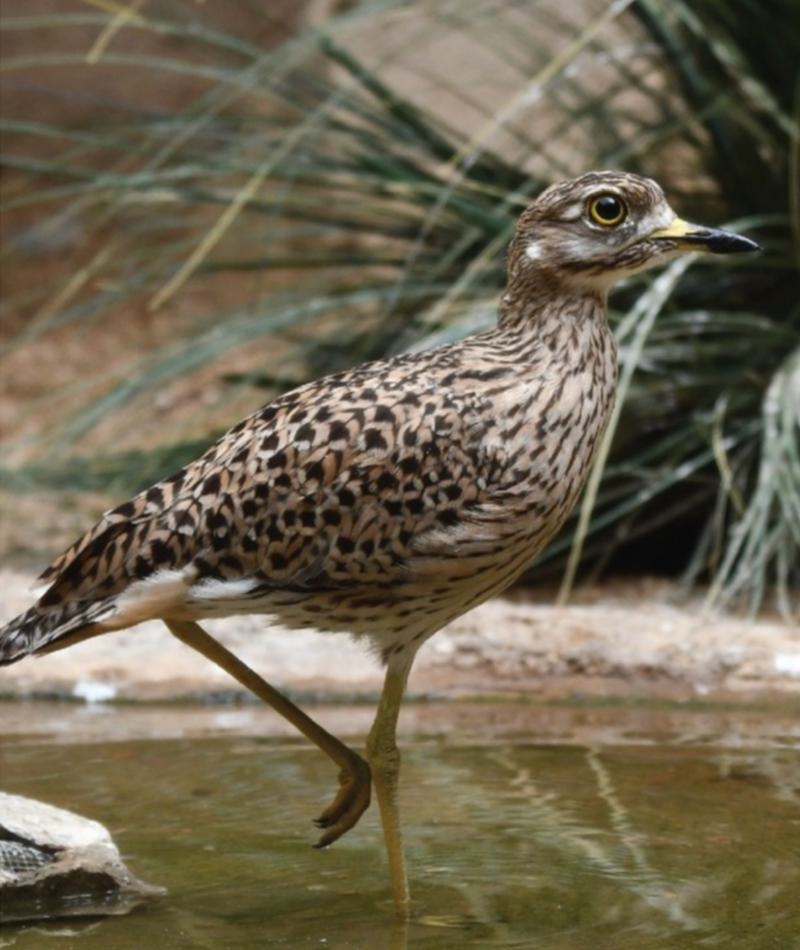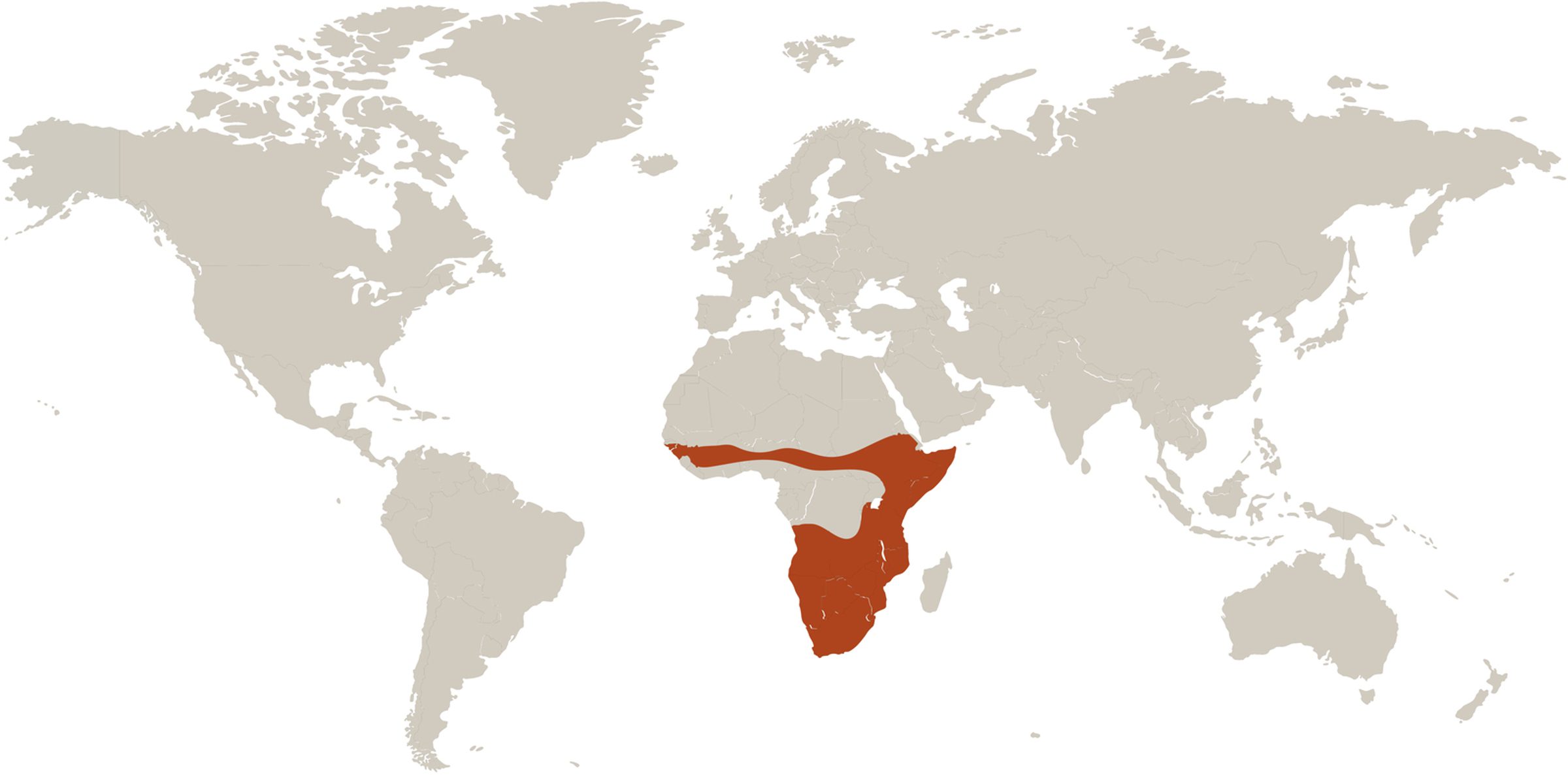
Cape Thick-knee
Burhinus capensis
Did you know?
- Cape thick-knees' are part of the Burhinidae family, which they share with other wading birds.
- Their brown coloring provides camouflage.
- If their eggs or chicks are threatened, males and females will flop on the ground to distract a predator.
- They are nocturnal predators.
- Both parents take turns incubating (sitting on) the eggs.
No Sun for Me
These birds live in dry areas and cope with daytime sun and heat by taking cover under trees and bushes.
Lifelong Mate
Cape thick-knees mate for life and are protective parents. They raise only one or two chicks at a time.
Threat Level
- Unknown
- Common
- Near Threatened
- Threatened
- Endangered
- Critically Endangered
- Extinct in the Wild
Common
The Cape Thick-knee is widespread and abundant.
Range
Southwestern and southern Africa
Habitat
Woodland edge, savannas, thorn scrub

We care about cape thick-nees
The Saint Louis Zoo supports cape thick-nees at the Bird House and Bird Garden. Learn more about how we are helping wildlife around the world.
Find this animal in Historic Hill

SAINT LOUIS ZOO ZONE
Historic Hill
Historic Hill is a lovely stroll through one of the oldest parts of the Saint Louis Zoo. From the 1904 World’s Fair Flight Cage to the Spanish architectural flavor of the 1920s in the Bird House, Primate House and Herpetarium to the finishing touches of our thoroughly modern exhibits, this area of the Zoo has a unique ambiance and a nostalgic history that make it a great destination.

